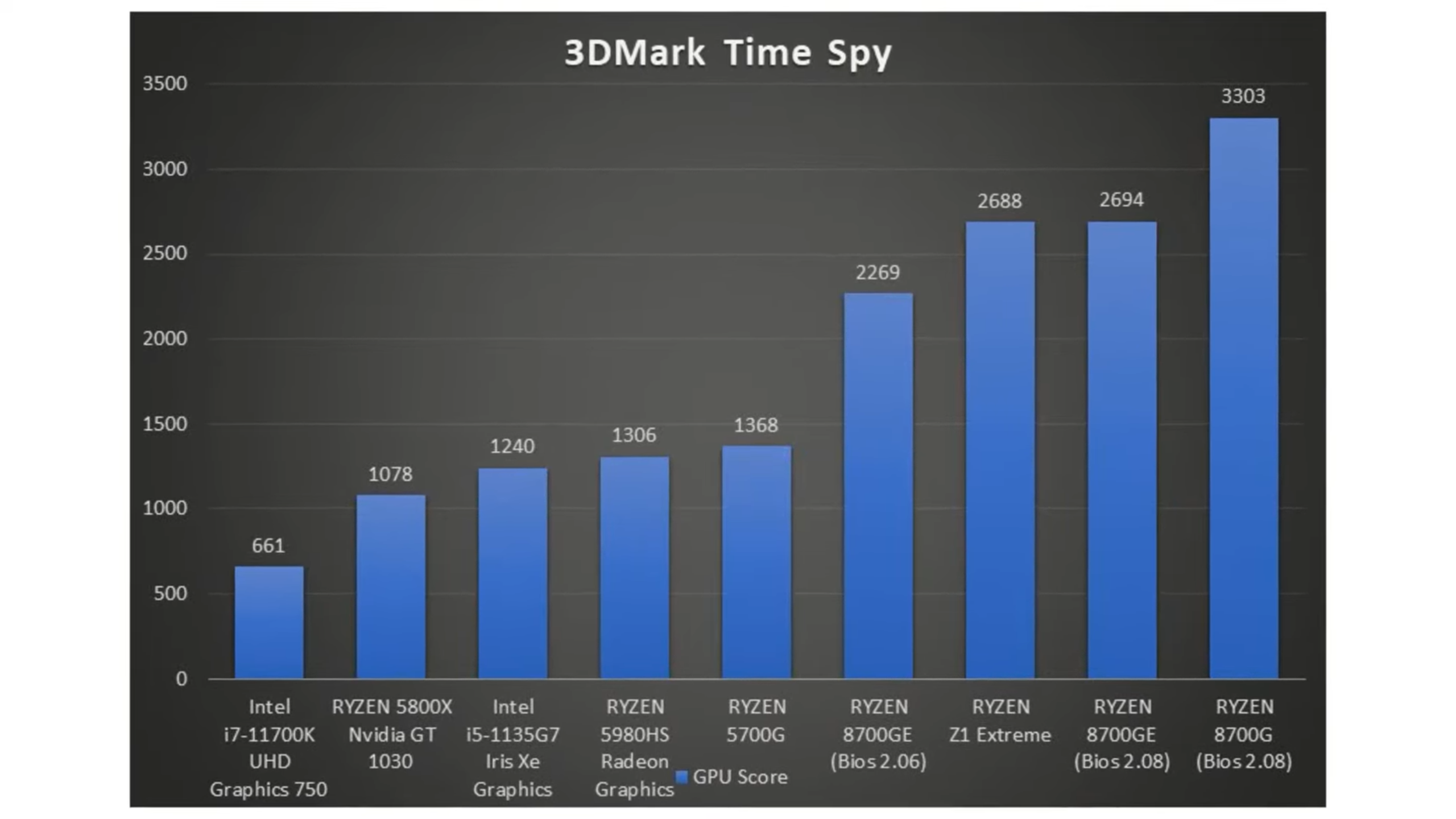Leaked AMD Ryzen 7 8700GE 35W desktop Zen 4 APU tested vs 8700G, 23% less GPU performance at half the power
Engineering sample of the 8700GE gets benched by German YouTuber GucksTV

A leaked engineering sample of the unreleased Ryzen 7 8700GE has been tested by German YouTuber GucksTV. According to the tests, the unreleased chip exhibits only a 23% reduction in GPU performance despite the 50% reduction in max TDP, reports VideoCardz. Compared to the AMD Ryzen 8700G (which we have reviewed in detail already), which operates at up to 65 watts, the Ryzen 8700GE is limited to a maximum 35-watt TDP and targets lower-power devices.
Before proceeding, it's important to clarify that we can't technically prove this is a real Ryzen 7 8700GE being tested, and even if it were, it's still an engineering sample, which could mean it has slightly better or worse performance than whatever the retail 8700GE ends up having. However, with that clarified, it does seem reasonably likely that the AMD Ryzen 7 8700GE "engineering sample" acquired by GucksTV for his coverage is the real deal, particularly with the results below.
First, let's establish the basics: the AMD Ryzen 7 8700G and GE have near-identical basic specifications. There are 12 RDNA3 Compute Units onboard for iGPU functionality (12 RDNA3 CUs also power ROG Ally and other Z1 Extreme gaming handhelds), and 8 Zen 4 CPU cores capable of SMT. Thus, the performance differentials that arise between 8700G and 8700GE are almost solely due to the 50% lower power intake.
The AMD Ryzen 7 8700GE, which looks to be priced at $299 USD, may serve to undercut the 8700G in the long term— particularly for low-power PC builds and budget builds in general.



According to the variety of GPU benchmarks run by GucksTV (some are embedded above), the Ryzen 7 8700GE is extremely close to the Ryzen Z1 Extreme, which uses the same 12 RDNA3 Compute Unit iGPU design and 35 Watt TDP. This means an entry-level Ryzen 8700GE-only PC setup should still prove fairly viable for desktop use and light-to-moderate gaming, provided you're willing to adjust graphics settings.
Of course, the higher TDP the Ryzen 8700G enjoys means that you can push its performance even farther than the 8700GE or its (relative) ilk of Ryzen Z1 Extreme-powered handhelds. With up to 28% more performance on the table with the higher power limit, the 8700G looks to remain iGPU king— just with a very convenient alternative for anyone who needs an extra 50 bucks or so.
Get Tom's Hardware's best news and in-depth reviews, straight to your inbox.

Christopher Harper has been a successful freelance tech writer specializing in PC hardware and gaming since 2015, and ghostwrote for various B2B clients in High School before that. Outside of work, Christopher is best known to friends and rivals as an active competitive player in various eSports (particularly fighting games and arena shooters) and a purveyor of music ranging from Jimi Hendrix to Killer Mike to the Sonic Adventure 2 soundtrack.
-
thisisaname GPU's from all the articles about undervolting and overclocking with increased power, that performance does seem to scale very poorly Vs power. Doubling the power does not get you anywhere near double the performance.Reply
Thus it makes sense to me that a 50% reduction in TDP (Thermal Design Power) will not also reduce the performance by 50% -
Notton So it's basically a 7840U in a desktop socket.Reply
As if the rebadged 7840HS wasn't enough.